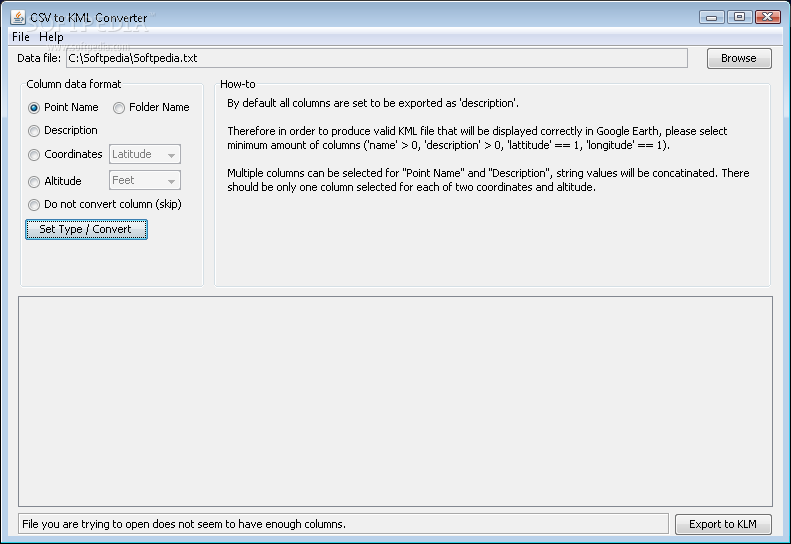


If labels are turned on, the layer's label field or expression will be used for the feature name in the KML. If you require more than simple symbols for your features, use the Return single composite image parameter of the Layer To KML tool to convert the symbolized features into a raster image that maintains complex symbology. 3D symbols and other complex identifiers are not supported.įor polygon features, only simple color fills with simple line borders are supported no patterned, hatching, or gradient fills are supported, and the same rules for lines apply to polygon borders. Point features will export the current symbol and use a. Consider this general rule: only simple symbols are supported.įor line features, only simple symbols with basic color and line width properties are supported advanced effects such as dashes and arrows and multilevel or layered symbols are not supported. For feature layers, not all ArcGIS symbols are supported in KML. The layer symbology will be used as the KML symbol. The layer description will be used as the pop-up display content for the folder. The layer name will be used as the KML folder name. The following table shows a number of things you can do to prepare your layers for conversion to KML.Ī layer in ArcGIS becomes a folder in the KML. Except where noted below, the rule of converting a layer to KML is what you see is what you get. By setting layer properties and data attributes, you can ensure that the KML you create matches your expectations, is easy to interpret, and is well-formed. Many different aspects and properties of layers are applied to the KML during conversion, including visible attribute fields, transparency, labels, pop-up displays, and symbology. After creating the KML, you can share it with others who can view it in an application such as Google Earth or ArcGIS Explorer.īefore running the Layer To KML tool, you should symbolize the layer and set certain properties and modify specific data attributes. KML created by this tool will be a snapshot of your data at the time the layer was converted. Use the Layer To KML tool to convert any map layer to KML. After performing this conversion, you can use the geographic data from your KML in the same ways you would any other GIS data: edit, analyze, and map it. In addition to the KML feature and imagery data and symbology, several other properties of the KML will also be included in the converted ArcGIS data, such as pop-up information, snippets, and other attributes. kmz file to a file geodatabase containing all features and imagery from the source KML and a layer file that maintains the colors and symbols of the source KML. The tag has subtags, such as, , and, which store information about the point as well as a subtag that stores the x-, y-, and z-coordinates. For example, each point feature in a KML is inside a tag. Screen overlays are not part of the geographic display but are useful as information displays.Īs KML is an XML-based format, its structure is based on various tags. Examples of ground overlays include aerial imagery, feature layers, or maps converted to an image.Ī map or screen graphic such as a logo, legend, or picture. KMZ files can be viewed and worked in all the same ways as KML files.Ī point feature or location on a point, line, or polygon feature that can be clicked to display pop-up information.Ī raster or image that is typically georeferenced and draped on the earth's surface. KML terminologyĪ compressed or zipped KML file. None of the new features in the KML 2.2 specification are currently supported, including time animation, photo overlays, and schema tags.

All of the features of the KML 2.0 and 2.1 specifications are supported. Using geoprocessing tools, you can convert a map layer to KML and convert KML to an ArcGIS geodatabase, so you can view, edit, and analyze the geographic data contained in any KML file. A single KML file can contain features of different types as well as imagery. KML can also contain related content such as graphics, pictures, attributes, and HTML, whereas datasets in ArcGIS are typically seen as separate and homogeneous elements (for example, point feature classes can only contain points rasters can only contain cells or pixels and not features). KML can be composed of point, line, polygon features, and raster imagery. kmz (for compressed or zipped KML files) file extension.
KML TO CSV FREE
KML is a common format for sharing geographic data with non-GIS users, as it can be easily delivered on the internet and viewed in a number of free applications. Keyhole Markup Language (KML) is an XML-based format for storing geographic data and associated content and is an official Open Geospatial Consortium (OGC) standard.


 0 kommentar(er)
0 kommentar(er)
